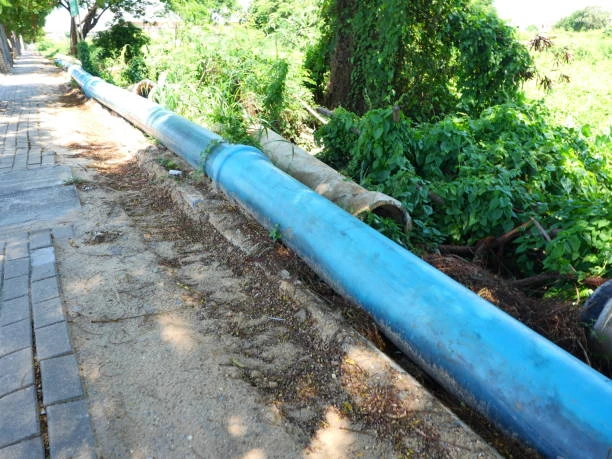In recent years, the issue of plastic waste has gained significant attention worldwide, and Switzerland is stepping up to address this critical problem. With its commitment to sustainability, Swiss plastic recyclers are leading a new initiative aimed at enhancing the circular economy of piping waste. This article explores the details of this initiative, the importance of piping waste recycling, and how it contributes to a sustainable future.
Understanding the Piping Waste Problem
Piping systems are essential in various industries, including construction, agriculture, and manufacturing. However, the production and disposal of piping materials, often made from plastics, contribute significantly to environmental pollution. When these materials are not properly recycled, they end up in landfills or the ocean, leading to long-lasting ecological damage.
The Role of Plastic in Piping
Plastics, particularly PVC (polyvinyl chloride) and PE (polyethylene), are commonly used in piping due to their durability, flexibility, and resistance to corrosion. While these properties make plastics an ideal choice for many applications, they also pose challenges when it comes to disposal and recycling. As the demand for piping systems continues to rise, so does the urgency to develop sustainable solutions for managing plastic waste.
The Piping Circular Economy Concept
The circular economy is a model that emphasizes the importance of reusing, recycling, and repurposing materials to minimize waste. Instead of following a linear path of “take, make, dispose,” the circular economy aims to keep resources in use for as long as possible. By closing the loop on materials, we can reduce the consumption of new resources and decrease environmental impact.
Circularity in Piping Waste
In the context of piping waste, circularity involves reclaiming used piping materials and transforming them into new products or raw materials. This process not only mitigates waste but also conserves energy and reduces greenhouse gas emissions associated with the production of new plastic materials.
The Swiss Piping Initiative
Recognizing the importance of tackling piping waste, Swiss plastic recyclers have joined forces to launch a pioneering circularity initiative focused on piping. This initiative aims to create a closed-loop system for plastic piping, ensuring that end-of-life products are efficiently recycled and repurposed.
Key Goals of the Initiative
- Increase Recycling Rates: One of the primary goals is to significantly improve the recycling rates of plastic piping materials. This involves creating more accessible recycling programs and raising awareness among consumers and businesses about the importance of proper disposal.
- Develop Advanced Recycling Technologies: The initiative will invest in research and development of innovative recycling technologies that can handle the unique challenges posed by plastic piping materials. This includes methods for separating different types of plastics and efficiently processing them for reuse.
- Promote Industry Collaboration: Collaboration among various stakeholders, including manufacturers, recyclers, and policymakers, is essential for the success of this initiative. By working together, they can create standardized practices and guidelines that facilitate recycling efforts.
- Educate and Advocate: Education plays a crucial role in changing consumer behavior. The initiative will include campaigns to inform the public about the benefits of recycling piping materials and the impact of plastic waste on the environment.

Challenges in Piping Waste Recycling
While the initiative represents a significant step forward, several challenges must be addressed to achieve its goals.
Material Contamination
One of the primary challenges in recycling plastic piping is material contamination. Pipes often contain residual substances, such as chemicals or adhesives, that can complicate the recycling process. Developing effective cleaning and sorting technologies will be vital in overcoming this hurdle.
Economic Viability
Recycling plastics can sometimes be less economically viable than producing new materials. This discrepancy can deter companies from investing in recycling efforts. The initiative aims to explore ways to make recycling more profitable, such as establishing markets for recycled materials.
Policy and Regulation
Effective policies and regulations are essential to support recycling initiatives. The Swiss government will need to implement measures that encourage recycling and penalize improper disposal. This may include incentives for businesses that utilize recycled materials in their products.
The Piping Environmental Impact
The environmental benefits of the Swiss circularity initiative are significant. By increasing recycling rates and reducing the amount of plastic waste entering landfills and oceans, this initiative will contribute to a cleaner, healthier planet.
Reducing Carbon Footprint
Recycling plastic piping reduces the demand for new plastic production, which is a carbon-intensive process. By closing the loop on materials, the initiative will help lower overall greenhouse gas emissions, contributing to Switzerland’s climate goals.
Conserving Resources
The initiative will help conserve valuable natural resources by reusing existing materials instead of relying solely on new ones. This conservation is crucial in a world where resources are becoming increasingly scarce.
Conclusion
The Swiss plastic recyclers’ initiative to lead a piping waste circularity initiative represents a promising step toward a more sustainable future. By focusing on recycling, industry collaboration, and public education, this initiative aims to create a closed-loop system that not only reduces waste but also conserves resources and minimizes environmental impact. As more countries recognize the importance of circular economies, Switzerland is poised to be a leader in the global movement toward sustainable practices in the plastic industry.
FAQs
1. What types of plastics are commonly used in piping?
Common types of plastics used in piping include PVC (polyvinyl chloride), PE (polyethylene), and PP (polypropylene).
2. How can I recycle my plastic pipe?
Check with local recycling programs or waste management facilities to find out if they accept plastic pipe. Some retailers may also have take-back programs.
3. What is the circular economy?
The circular economy is an economic model focused on minimizing waste and making the most of resources by reusing, recycling, and repurposing materials.
4. Why is recycling plastic pipe important?
Recycling plastic pipe reduces landfill waste, conserves natural resources, and lowers greenhouse gas emissions associated with the production of new materials.
5. What challenges does the recycling of plastic pipe face?
Challenges include material contamination, economic viability, and the need for supportive policies and regulations.


















